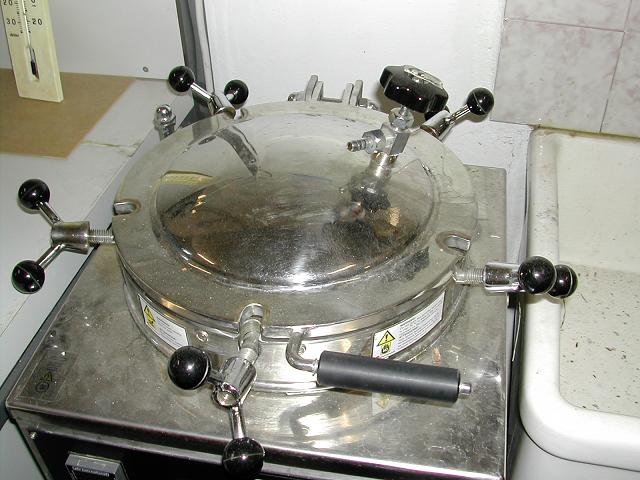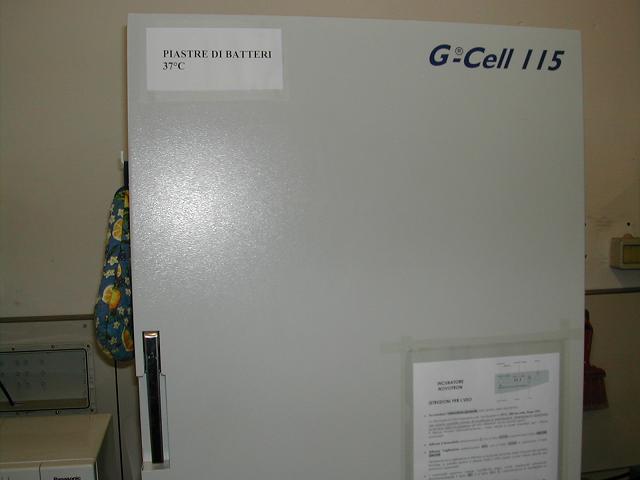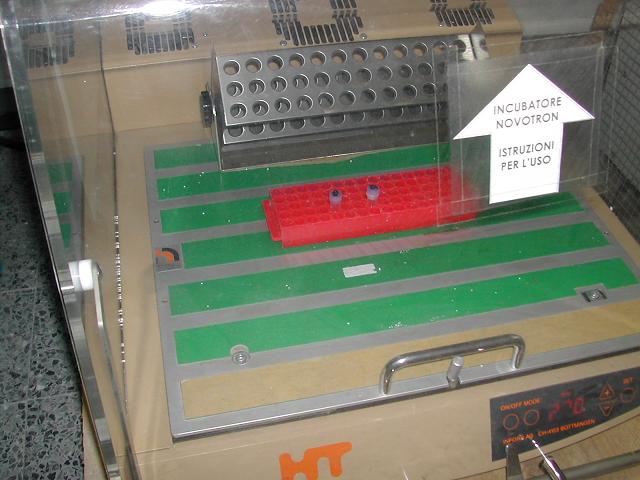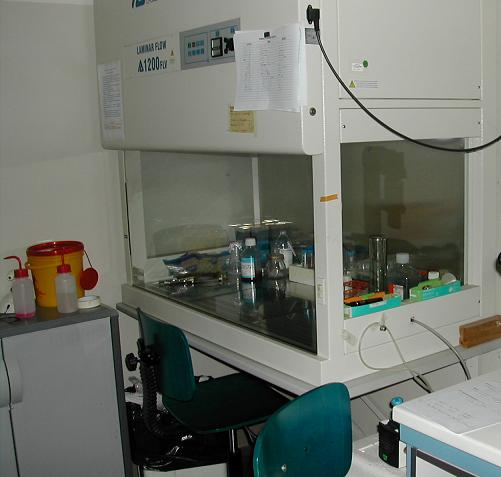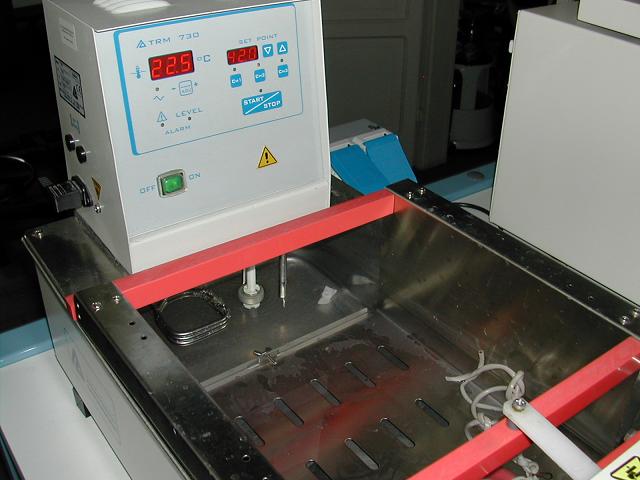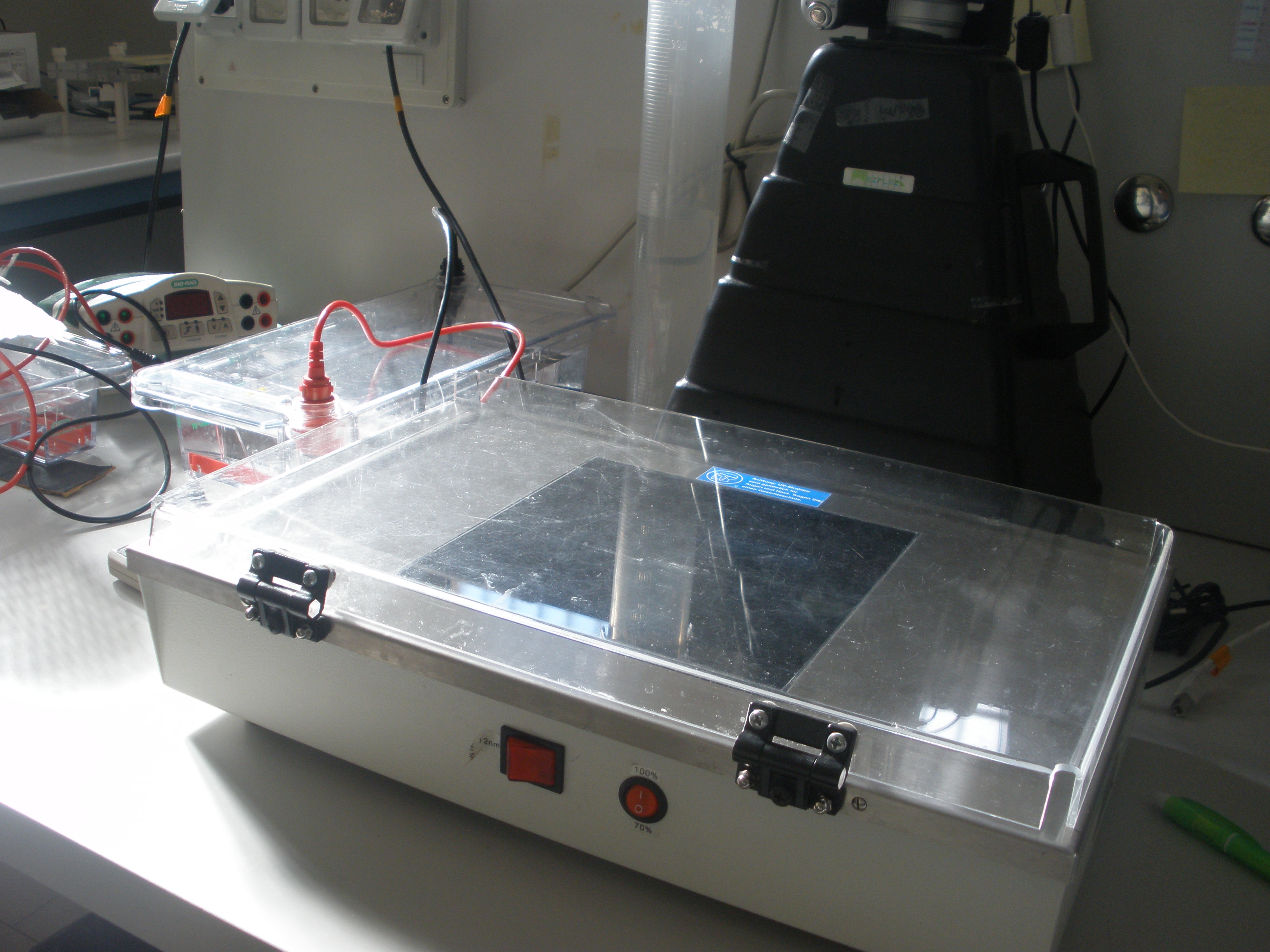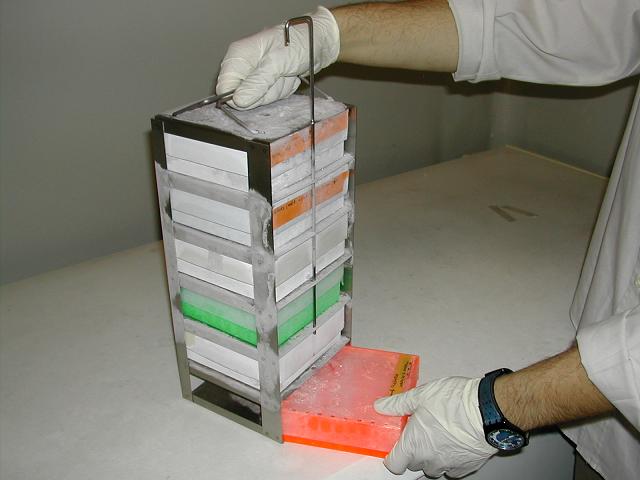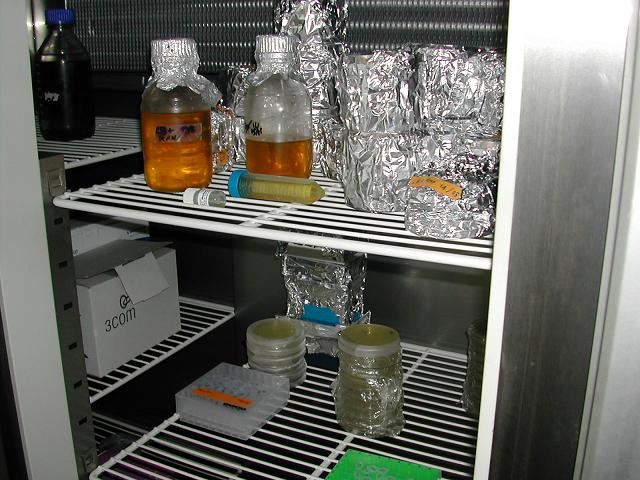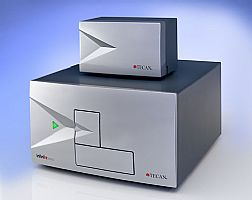Team:UNIPV-Pavia/Material Methods/Instruments
From 2010.igem.org
| Line 17: | Line 17: | ||
==AUTOCLAVE== | ==AUTOCLAVE== | ||
| - | <table><tr><td valign="top" align="left"> | + | <table width="100%"><tr><td valign="top" align="left"> |
<html><p align="justify"> | <html><p align="justify"> | ||
An autoclave is a device to sterilize equipment and supplies by subjecting them to high pressure saturated steam at 121°C or more, typically for 15 to 20 minutes depending on the size of the load and the contents. It was invented by Charles Chamberland in 1879, although a precursor known as the <i>steam digester</i> was created by Denis Papin in 1679. The name comes from Greek <i>auto</i>, ultimately meaning <i>self</i>, and Latin <i>clavis</i> meaning <i>key</i> — a self-locking device. | An autoclave is a device to sterilize equipment and supplies by subjecting them to high pressure saturated steam at 121°C or more, typically for 15 to 20 minutes depending on the size of the load and the contents. It was invented by Charles Chamberland in 1879, although a precursor known as the <i>steam digester</i> was created by Denis Papin in 1679. The name comes from Greek <i>auto</i>, ultimately meaning <i>self</i>, and Latin <i>clavis</i> meaning <i>key</i> — a self-locking device. | ||
| Line 33: | Line 33: | ||
==BACTERIA ROOM== | ==BACTERIA ROOM== | ||
| - | <table><tr><td valign="top" align="left"> | + | <table width="100%"><tr><td valign="top" align="left"> |
<html><p align="justify"> | <html><p align="justify"> | ||
This is a room in which we work with bacteria. The temperature in this room is very hot and it smells like puke. | This is a room in which we work with bacteria. The temperature in this room is very hot and it smells like puke. | ||
| Line 49: | Line 49: | ||
==INCUBATOR FOR PLATES== | ==INCUBATOR FOR PLATES== | ||
| - | <table><tr><td valign="top" align="left"> | + | <table width="100%"><tr><td valign="top" align="left"> |
<html><p align="justify"> | <html><p align="justify"> | ||
This is a oven in which plates are kept at 37 C to grow bacteria. | This is a oven in which plates are kept at 37 C to grow bacteria. | ||
| Line 65: | Line 65: | ||
==INCUBATOR AND SHAKER FOR LIQUID CULTURES== | ==INCUBATOR AND SHAKER FOR LIQUID CULTURES== | ||
| - | <table><tr><td valign="top" align="left"> | + | <table width="100%"><tr><td valign="top" align="left"> |
<html><p align="justify"> | <html><p align="justify"> | ||
This is a oven where bacteria are kept to grow. In this case you can define temperature an rpm. | This is a oven where bacteria are kept to grow. In this case you can define temperature an rpm. | ||
| Line 81: | Line 81: | ||
==MOLECULAR BIOLOGY ROOM== | ==MOLECULAR BIOLOGY ROOM== | ||
| - | <table><tr><td valign="top" align="left"> | + | <table width="100%"><tr><td valign="top" align="left"> |
<html><p align="justify"> | <html><p align="justify"> | ||
This is the room in which we treat DNA. | This is the room in which we treat DNA. | ||
| Line 97: | Line 97: | ||
==HOOD== | ==HOOD== | ||
| - | <table><tr><td valign="top" align="left"> | + | <table width="100%"><tr><td valign="top" align="left"> |
<html><p align="justify"> | <html><p align="justify"> | ||
It is a laminar flow hood for handling highly toxic products. | It is a laminar flow hood for handling highly toxic products. | ||
| Line 113: | Line 113: | ||
==WATER BATH== | ==WATER BATH== | ||
| - | <table><tr><td valign="top" align="left"> | + | <table width="100%"><tr><td valign="top" align="left"> |
<html><p align="justify"> | <html><p align="justify"> | ||
It is a bath in which water is heated to high temperatures for gel extraction and heath shock during bacterial transformation. | It is a bath in which water is heated to high temperatures for gel extraction and heath shock during bacterial transformation. | ||
| Line 129: | Line 129: | ||
==INSTRUMENTS FOR ELECTROPHORESIS== | ==INSTRUMENTS FOR ELECTROPHORESIS== | ||
| - | <table><tr><td valign="top" align="left"> | + | <table width="100%"><tr><td valign="top" align="left"> |
<html><p align="justify"> | <html><p align="justify"> | ||
Gel electrophoresis apparatus - Agarose gel is placed in this TBE buffer filled box and electrical field is applied via the power supply to the rear. The negative terminal is the black one while the positive is the red one. In this way DNA, that is naturally negatively charged, migrates to the positive pole. | Gel electrophoresis apparatus - Agarose gel is placed in this TBE buffer filled box and electrical field is applied via the power supply to the rear. The negative terminal is the black one while the positive is the red one. In this way DNA, that is naturally negatively charged, migrates to the positive pole. | ||
| Line 145: | Line 145: | ||
==GEL IMAGE ACQUISITION SYSTEM== | ==GEL IMAGE ACQUISITION SYSTEM== | ||
| - | <table><tr><td valign="top" align="left"> | + | <table width="100%"><tr><td valign="top" align="left"> |
<html><p align="justify"> | <html><p align="justify"> | ||
It is a UV system with camera used to acquire gel run snapshots. | It is a UV system with camera used to acquire gel run snapshots. | ||
| Line 161: | Line 161: | ||
==COLD INSTRUMENTS== | ==COLD INSTRUMENTS== | ||
| - | <table><tr><td valign="top" align="left"> | + | <table width="100%"><tr><td valign="top" align="left"> |
<html><p align="justify"> | <html><p align="justify"> | ||
We have freezers where Dna and bacterial cultures are stocked. In particular we have two -20 C freezers to stock DNA and one -80 C freezer to stock bacteria.<br> | We have freezers where Dna and bacterial cultures are stocked. In particular we have two -20 C freezers to stock DNA and one -80 C freezer to stock bacteria.<br> | ||
| Line 181: | Line 181: | ||
==TECAN Infinite 2000== | ==TECAN Infinite 2000== | ||
| - | <table><tr><td valign="top" align="left"> | + | <table width="100%"><tr><td valign="top" align="left"> |
<html><p align="justify"> | <html><p align="justify"> | ||
Tecan Infinite F200 is a multifunctional microplate filter-based reader with injector option, that provides high performance for the vast majority of microplate applications and research. It has been designed as a general purpose laboratory instrument for professional use, supporting common 6 to 384-well microplates. | Tecan Infinite F200 is a multifunctional microplate filter-based reader with injector option, that provides high performance for the vast majority of microplate applications and research. It has been designed as a general purpose laboratory instrument for professional use, supporting common 6 to 384-well microplates. | ||
Revision as of 08:07, 6 August 2010
|
|
|||||||||||||||||||||||||||||||||||||||||||||||
|
|
||||||||||||||||||||||||||||||||||||||||||||||
 "
"

